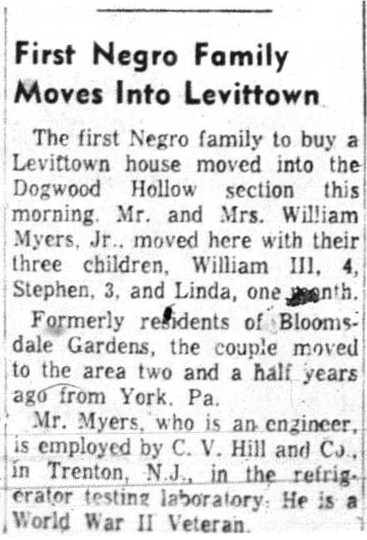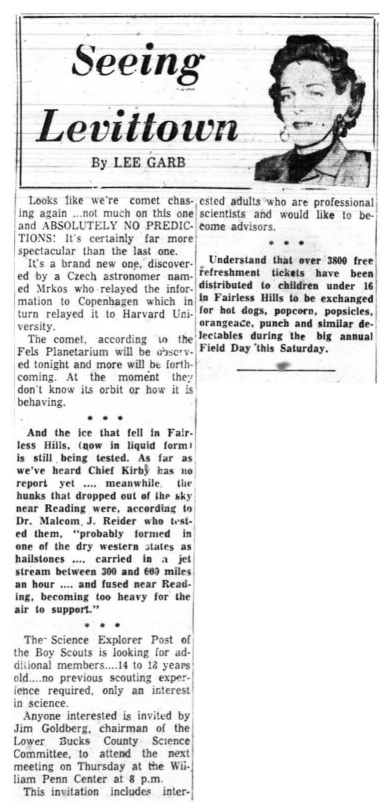Dark Cloud
On August 12, 1957, the Editor of the Courier-Times assigned Lee to write the headline story of the following day's newspaper. When he handed her the information relating to the story, she refused and went to the Managing Editor to appeal. What the information revealed was that the next day, Levittown's first black residents, the Myers family, were scheduled to move into their new house. Lee protested the editor's decision to make that the front-page headline story, insisting that it would be irresponsible and inflammatory. She knew that it was newsworthy and had to be published, but she argued that it didn't need to be put in the spotlight. The Editor pleaded that it was big news and would create a huge spike in readership. The Managing Editor sided with Lee and the next day, a small three-paragraph story appeared at the bottom of page 2, on the same page as her Seeing Levittown column which on that day, discussed a comet that was gaining visibility in the night sky. Her column would run for two more days before she became overwhelmed by the firestorm of racial bigotry that ensued.
The story Lee wrote on page two on August 13th was picked up by wire services and repeated in newspapers around the US. By the time the next edition rolled out, there had been rioting on the streets of Levittown in the vicinity of the Myers House. At one point, PA State Police had to be called in to assist local police in controlling the angry mob. One State Trooper was hospitalized with injuries from a thrown rock, an image that made the cover of Life magazine. For many weeks, Lee turned out pivotal stories regarding the explosion of racial bigotry that occurred in the heart of Quaker America. Her interpersonal skills helped her garner accurate viewpoints from all sides, as everyone felt she was "in their camp". She prided herself on her journalistic objectivity while abhorring the words and actions of the Levittown Betterment Committee, a benignly-named organization formed to protest the new "negro family".
[Note: In the early '40's, Lee had partnered with a black woman to open a millinery shop in Trenton. It was quite scandalous, especially when each family hosted the other for dinner in their respective homes in quite segregated neighborhoods.]



